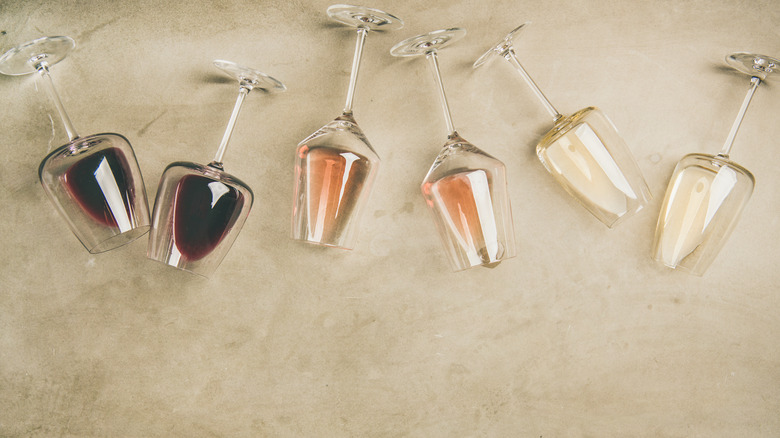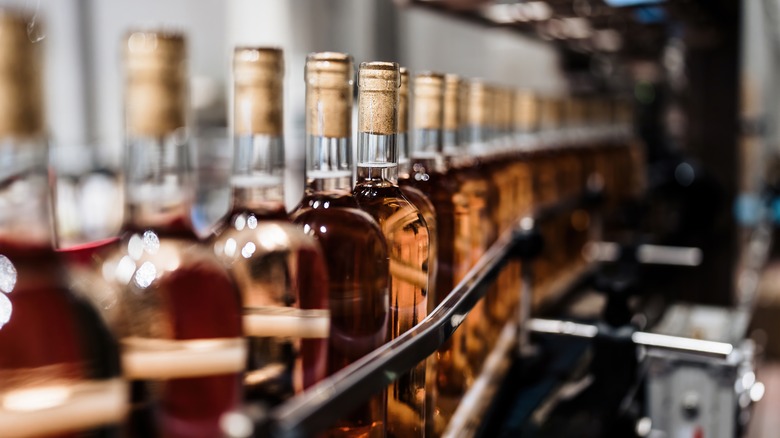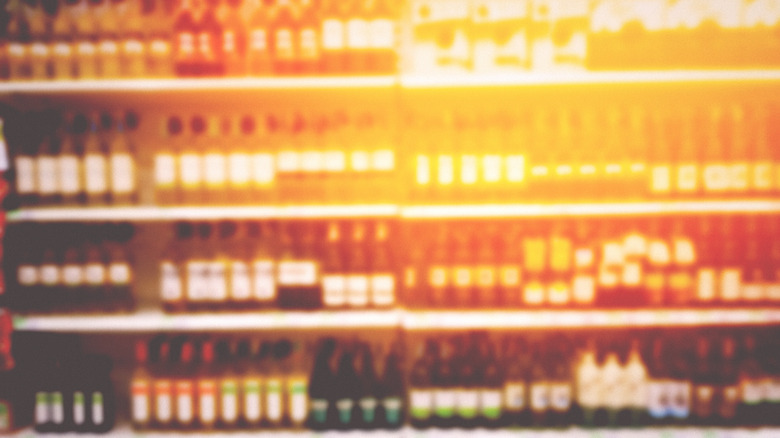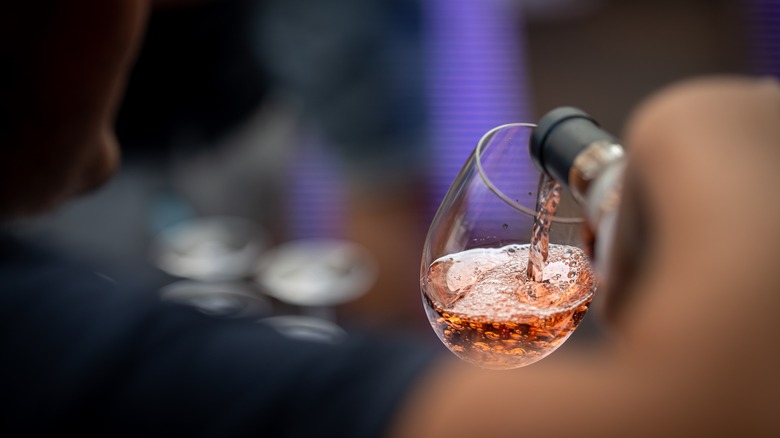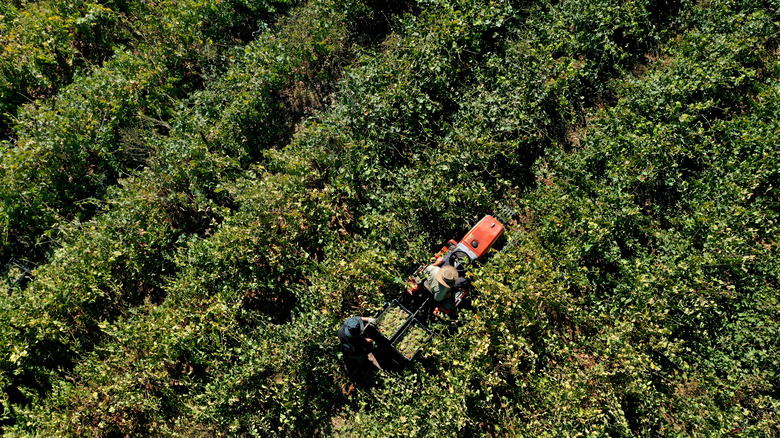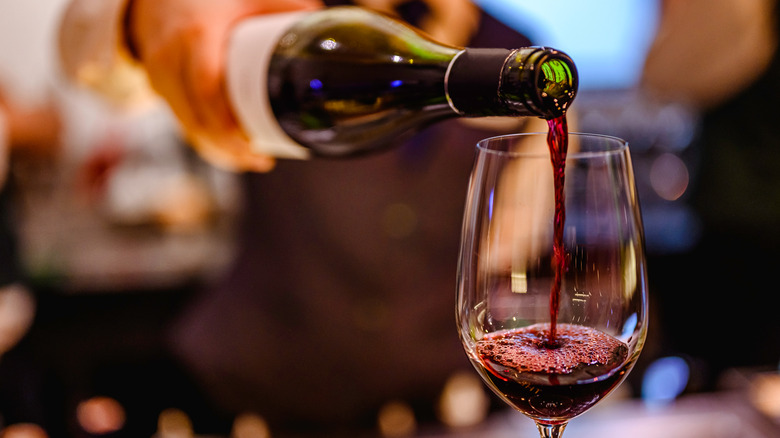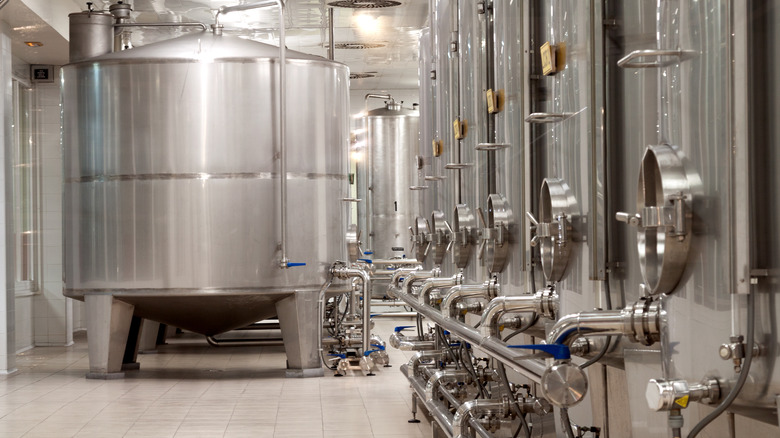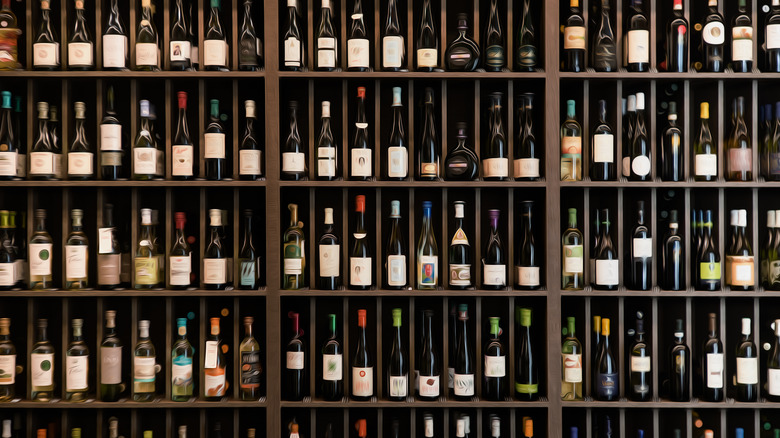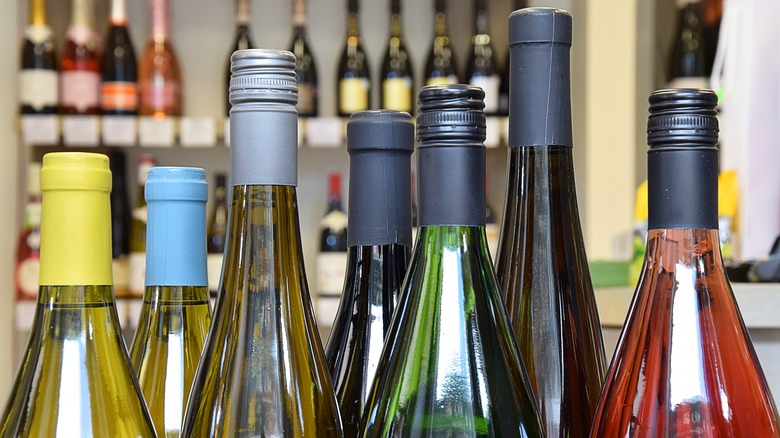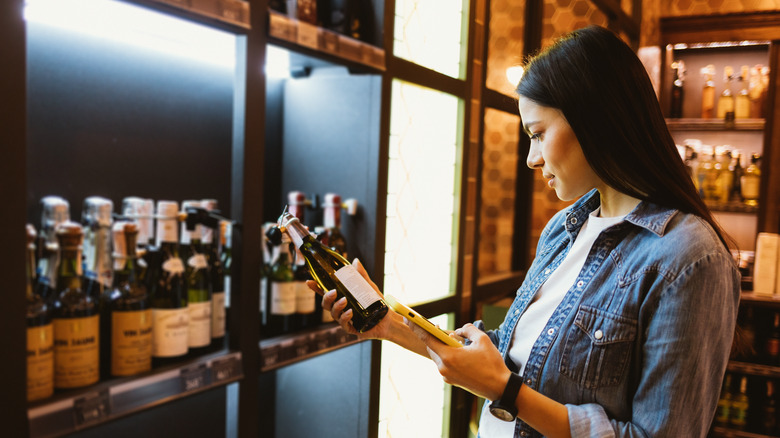10 Reasons Why You Shouldn't Drink Clean Wine
Since antiquity, wine traditions from Georgia to South Africa to Europe have been a symbol of religion, status, nourishment, and lifestyle. It is no different today. Wine — to a bottle — means something different to everyone who purchases it and drinks it. Over the past few years, more and more people have sought out wines that fit their values, diets, and lifestyles. Consumers are becoming more aware of the cultivation and processing of their food and beauty products and are starting to insist that their wine should also offer some level of transparency.
This has opened the door to powerful positive efforts by some wineries and wine brands to deliver honest production information based on honest production methods. But it's also opened the door for some brands to use terms that might feel good but don't mean anything or could even present problems. One of those terms is "clean wine" — a marketing vibe intended to persuade people that these bottles are better for them. Yet, not is all that it seems. There are many reasons why the term "clean" is misleading, and a few things you should know about identifying these confusing claims.
Clean isn't an official term
In the U.S., there is no mandatory ingredient or nutrient labeling for wine (aside from alcohol by volume), and many people are shocked to learn that there can be more than grapes in that bottle. In the cellar and the vineyard, intervention and additives can be employed in a wide range, but methods aren't uniformly communicated, leaving many people confused. This is often countered when a winery can share parts of their practice that are defined, such as organic or biodynamic farming. A winery can also state that their products are sustainable wines, or that the product is vegan, vegetarian, or otherwise certified to adhere to a larger set of priorities and defined standards that may reflect the choices or values of consumers. B-Corp, Salmon Safe, and Climate Neutral are examples of this.
On the other hand, a wine could claim to be clean, healthy, or better-for-you. These terms may evoke a feeling or sense of security, but they are hard to prove and are self-defined by the brand. Even the highly used term "sustainability" doesn't have a framework. "Much of the time, a wine label or producer focuses on one or two perceived health benefits to attract consumers to a product," Kathy Clancy, founder of The Natural Wine School, told Tasting Table. "But 'clean' is not an all-encompassing healthy option for everyone."
US government warns against the term clean wine
The term clean when referring to alcoholic beverages came into the spotlight clearly enough to get the attention of the US federal government. In an April 2022 statement from the Market Compliance Office of the Alcohol and Tobacco Tax and Trade Bureau (TTB), the following was clarified: "Consumers should not interpret the term [clean] as meaning that the beverage is organic or has met other production standards set by TTB."
The TTB went on to identify the term as "puffery" when used simply as a taste descriptor. But if combined with additional language to convince consumers that a product has health benefits or lower risks, the bureau clearly calls out the term clean for being "misleading." Specifically, the statement points the finger at claims made to indicate that a product is healthy or that it would result in "no headaches" for consumers. Additionally, the TTB says that the commentary was in response to inquiries about the term, and that currently, there is no definition or standard that specifically outlines what a clean wine may be. That said, there are currently no required certifications between the term "clean wine" and a specific production method.
Health claims are inappropriate
Many people who seek out wines that are called clean are often doing so because of health-related concerns. It is obvious that no one should let brands provide medical advice, that wine is an alcoholic product that can have a detrimental influence on the body, and that the news is full of conflicting reports about the health impact of wine. It can be overwhelming. "Part of the challenge is that most people have their own definition of healthy wine," says Kathy Clancy. "It may include low calories, low alcohol, low processing, no synthetic chemicals, high antioxidants, or a combination of these."
For instance, some diets discourage different types of sugar, which some wines do contain, though most dry wines have very little or no sugar. Because there are no nutrient values on the wine label, shoppers can be left confused unless a wine happens to claim that it's sugar-free. Sugar in wine is a complicated subject; for the most part, most sugar present in wine comes from the actual grapes. If a product claims that most other wine producers are adding in sugar, that's not entirely accurate (this process is illegal in some parts of the world), but the contention will probably drive consumers to leave out many wines that would actually fit in the low or no sugar category, but that didn't make that claim on packaging or sales materials. Note: the most likely place to find sugar content will be on a tech sheet, which most wineries provide for each of their products.
Winemaking is often misunderstood
Another of the main reasons that people search for wines that are referred to as clean is because they falsely believe that wine may be crafted in an untrustworthy or tampered way. This is down to the lack of transparency mentioned above, but it's more than that. Like many wine enthusiasts, when Kathy Clancy started visiting vineyards and learning the intricacies of winemaking, she questioned why wine wasn't just fermented grapes. "We naturally believe, after some research, that wine farming practices and wine processing are complicated," she says that this makes the term clean seem attractive to some consumers. "But saying wine is clean to imply other wines are dirty is a fallacy and just plain old marketing."
It can be difficult to succinctly capture exactly what's happening during the months and years it takes to craft a bottle of wine. Sometimes the wine industry relies on terms that are both powerful and simple, even if they don't actually define anything. There's not much room on a bottle label, and many wineries use that space to describe how the wine tastes, potential wine and food pairings, or something other than cellar and vineyard practices. Just because a winery uses questionable terms, or doesn't say how they farm and vinify the wine, doesn't mean they are hiding something or cutting corners.
In fact, many small wine brands don't hire professional communication staff to help craft back labels and marketing. This may result in off-the-cuff or incomplete information that lands in the hands of shoppers. For some, grassroots messages can be interpreted as a good thing. Still, it does mean that it's up to the consumer to look into the producer to see what is intended by any unofficial terms or unstated details.
Confusion with natural, organic, and clean winemaking
Another common term in the wine industry is "natural" — though officially undefined, it represents different things to different people. Interestingly, many consumers choose natural wines for the same reasons that someone might choose a wine that calls itself clean, but the ethos tends to be about something different. The spirit of these products can stem from various origins. Unfortunately, for the consumer, it is up to the individual to sort out marketing language to get to the honest commitments of each and every wine brand.
Producers and drinkers of natural wines appreciate that it's farmed organically and crafted without chemicals, commercial yeasts, additives, processing aids, or additional sulfur. Clean wine promises some of the same restraints as natural wine but often tacks on additional benefits which seem to orbit around health and lifestyle. In France, where many producers of natural wine have long found inspiration, the agricultural regulatory body Institut National de l'Origine et de la Qualité (INAO) recognized an official definition of natural wine in 2020, but this has drawn debate and isn't yet an everyday touchpoint for wine consumers or producers of natural wine (via Wine Enthusiast). And, as we've mentioned, clean wine is still an ambiguous connotation, which presents even less of an agreed-upon definition than the emerging spheres of organic or natural wines.
Clean wine can contain additives
Beware of headlines and phrases that position most of the wine industry as bad while painting a single brand or set of brands as good. (Some producers tend to use the term "pure" in marketing, which is also not regulated). When a well-known clean wine brand says that its selection is free of toxic additives, they are likely leaving out some information. It can be argued that just because a winery uses a common food additive doesn't necessarily mean that said additive is surely toxic. Common wine additives such as yeasts, filtering and fining agents, and small amounts of sulfur are highly common in even the world's most carefully crafted wines. However, if you are looking for a wine that is devoid of additives, choosing a clean wine may not be the sure bet you're expecting.
Kathy Clancy points out that even USDA-certified organic wines have a toolbox of dozens of processing aids or additives to make their finished wine. "The problem is 'clean' is like 'new and improved' ... you have to dig deeper into its meaning to know what you're actually getting," says Clancy.
Clean wine can be highly manipulated
Some consumers turn to wines that claim to be clean in search of drinks with reduced alcohol content, and buyers should be aware of how low alcohol wines are made. "If you want no or low alcohol wines, you need to embrace that you are drinking a highly processed beverage," says Kathy Clancy of alcohol-reduced wine. She describes vacuum distillation or reverse osmosis as techniques used to separate the original wine at a molecular level. The producer then adds parts of the original back together to make a finished wine. "I call it Franken-wine," she says. If lower alcohol, or even non-alcoholic wines, are a priority, there are many options that naturally have lower ABV due to the winemaking traditions of particular regions or styles.
Another sales claim is that certain wines have lower calories. According to the U.S. Department of Agriculture, a 5-ounce glass of red table wine generally has around 120-130 calories. Dry white wine and sparkling wines have slightly less. In reality, wines that claim to be low calorie are probably comparable to other wines in their category, but the language can be deceptive as most wine brands don't typically state or tout calories as part of consumer communications.
A warning sign to consumers
The internet is full of articles about clean wine. These tend to oscillate between trying to convince people to sample them and trying to convince people that the category is bogus. Why does clean wine get so much attention? There are many myths about what happens to your body when you drink alcohol, and how to mitigate the influence of what we eat and drink. Gray areas about the health impact of wine (clean or not) are still being researched, and as a relatively new frontier, clean-claiming wines should also be considered with the same scrutiny as any alcoholic beverage, without placing trust in the marketing language of the brand.
Take for example, heart health, a topic that is often contemplated in relation to red wine consumption. "Any links between red wine and fewer heart attacks aren't completely understood," writes Mayo Clinic staff on its website. Yet it goes on to say that "those who drink moderate amounts of alcohol, including red wine, seem to have a lower risk of heart disease." The article wraps up by discouraging the consumption of alcohol to prevent heart disease, which in itself conflicts with previously made comments on the same page. Even respected health resources maintain caution and equilibrium when speaking about health and wine, and that should serve as a warning sign to consumers presented with claims from brands or marketing mouthpieces. Especially so around the unregulated pseudo-category of clean wine.
There are few sources of truth for wine buzzwords
A few years ago, when the term clean wine started hitting the market, many wine writers and professionals called it out for some of the reasons listed above. Similarly, one will find writers that demand more from natural wines. The nomenclature serves to upset some people and empower others. But dodging the topic to avoid scrutiny adds to the confusion. In the end, people who love reading about and researching wines will have the best options. Those that look for trendy buzzwords or entrust their wine choices without knowing about the source might end up with less than expected. And wineries that are interested in communicating with their fans and potential customers will benefit from providing information that the market craves right now. It doesn't have to be front-and-center on the label. Still, people should know how to get the nitty gritty when they want it, and there should always be hints of a brand's priorities in social media, tasting room conversations, and retail marketing materials.
"I recommend consumers look at producers' websites and technical sheets. If you don't find the information you want — such as on ambient versus inoculated yeast or levels of processing — call them!" says Kathy Clancy. "It's the only way I have found to get answers I am comfortable (or uncomfortable) with."
What to look for on the label
Yet most consumers aren't in a position to call a winery or winemaker if they are trying to select a bottle from the grocery store shelf. Without the opportunity to ask someone over the phone or in person, there are a few things to seek out on the label that might direct consumers to a more transparent wine. While not required, some wines do, in fact, put ingredients and production details on the label, and a peek at the back of the bottle might reveal more than expected. Look for wines that give clear detail: certification stamps, vintage year, if the brand produced the wine on the label (not just bottled by it), exact percentages of the blend, and other tidbits that paint a tangible picture of how the wine was crafted.
Specific clarity on origin is also a way to know more about where a wine came from. For example, a wine from California could be from anywhere in the state, while a wine from a single vineyard in Anderson Valley will be from that exact place. This doesn't in itself indicate how that vineyard was treated, but a quick internet search will probably reveal quite a bit. It's like an unknown call. If there's nothing on the screen but the word unknown, you probably won't answer, but if you can see that the call is coming from your kid's school, you are more likely to trust it and pick up.
